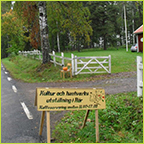- Johnny's Farm Visits & Grower Profiles
- Johnny's 2021 Grower Profiles
- Johnny's 2020 Grower Profiles
- Johnny's Tools Advisor Eliot Coleman: Celebrating Over 20 Years of Partnership | Johnny's Selected Seeds
- Late-Summer Recipe Preview with Farmer-Chef Frank Giglio | Three Lily Farm, Thorndike, Maine
- Johnny's Selected Seeds Visits Martha Stewart's Farm in the Hudson River Valley
- Javier Zamora of Javier Sanchez Medina (JSM) Organics Farms | Royal Oaks, California | Johnny's Farm Visits & Grower Profiles
- Farm Visit: 4-Town Farm, Seekonk, Massachusetts | Johnny's Selected Seeds 40th Anniversary
- Grower Profile: Selwood Green, Walton & Halifax, Nova Scotia, Canada | Johnny's Selected Seeds 40th Anniversary
- Grower Profile: Peach Crest Farm & Cooper Organics, Stratford, Oklahoma | Johnny's Selected Seeds 40th Anniversary
- Farm Visit: Paradise Farms Organics - Homestead, Florida | Johnny's Selected Seeds 40th Anniversary
- Grower Profile: Growing Power Urban Farm - Milwaukee & Madison, WI & Chicago, IL | Johnny's Selected Seeds 40th Anniversary
- Grower Profile: Slegers Greenhouses - Strathroy, Ontario, Canada | Johnny's Selected Seeds 40th Anniversary
- Grower Profile: Gathering Together Farm - Philomath, Oregon | Johnny's Selected Seeds 40th Anniversary
- Grower Profile: Pleasant Valley Farm - Argyle, New York | Johnny's Selected Seeds 40th Anniversary
- Farm Visit: Mark's Melon Patch – Dawson, Georgia | Johnny's Selected Seeds 40th Anniversary
- Grower Profile: Louie's Pumpkin Patch - Skövde, Sweden | Johnny's Selected Seeds 40th Anniversary
- Grower Profile: Living Water Farms - Strawn, Illinois | Johnny's Selected Seeds 40th Anniversary
- Farm Visit: Circle Fresh Farms - Denver, Colorado | Johnny's Selected Seeds 40th Anniversary
- Grower Profile: Freedom Farm - Freedom, Maine | Johnny's Selected Seeds 40th Anniversary
Louie's Pumpkin Patch • Skövde, Sweden
40th Anniversary Grower Profile — April 2013
Although many growers face the problem of building a market for their products, Louis Lehmann had a greater obstacle than most. His favorite crops were completely unfamiliar to most consumers and barely even grown commercially. But through enthusiasm and perseverance, aided by changing demographics, he now has a market where there once was none.
The crops in question are actually American favorites — pumpkins and winter squash. Louie grows them in Sweden, where he moved from the US in 1972 to work as a plant breeder of cereal crops. He and his wife, Myra, and their daughter have continued to live in Sweden since then.
"I started growing squash and pumpkins in 1973 on a small scale," he says. "There was no one that I knew in our community growing pumpkins. There were some farmers growing zucchini in the truck farming areas. We started celebrating Halloween with family and friends. It was very uncommon at the time. Today, most of the supermarkets sell pumpkins around Halloween time, and many carry winter squash the whole year. Squash and pumpkins are becoming more and more popular, but it has taken a long time. There are many immigrants that have brought the cucurbit culture with them."
Hallowe'en — a Cultural Import that Has Taken Hold in Sweden
"You cannot imagine how many Swedes have relatives in the States. Every year there must be hundreds of Swedish students that participate in the student exchange program with the States. We often run into American students here that are in the exchange program," he says.
Although the greatest increase in pumpkin demand has been for Hallowe'en decorations, Louie also has been working to increase acceptance of pumpkins and winter squash for food.
"One might say that the Swedes like their meat and potatoes, but there is also a lot of fish in the diet. I have heard that during the Second World War mainly due to rationing, pickled squash made from vegetable marrows was quite common. I think this was lost after the war, but I do get requests for the vegetable marrow. They also use it to make a candied squash, which they call 'suckat'." Louie has been growing pumpkins and squash since he was a boy in 4H in California. He has been an avid gardener his entire life, and he grows a wide array of vegetables for his family's use.
Growing for Market
The crops he grows for sale include sweet corn, ornamental corn, pumpkins, and squash.
"I only sell sweet corn in season. I grow five varieties from Johnny's, which mature at various times. Most of these sales go through my daughter, who sells the corn to co-workers at the university or to friends. The pumpkins and winter squash are sold at the local Harvest Festival, which takes place during the last Saturday and Sunday in September. We usually sell most of what we have produced. Anything left over is kept for our own use. We also sell Indian corn at the festival. The harvest festival spreads all through the countryside; some farms set up temporary exhibitions and sell produce while small community centers open their doors for local crafters to exhibit their wares — it is at one of these, near the pumpkin patch, where we exhibit and sell."
One of the reasons pumpkins and squash aren't widely grown is because of the short growing season in Sweden.
"In many places we can have frost as late as the first of June, and in the fall we can also have frost as early as the first of September. I usually sow here about the middle of May and cover with a floating cover. When we lived further south in Scania (aka Skåne), I usually sowed about the same time but I did not use a cover. In the fall we watch the weather closely to see if we might have to try to cover the pumpkin patch. Otherwise, we usually plan to harvest about the first week in September.
"I like many of the grey or crown types, which have a very nice light sweet taste, the kabocha types such as 'Cha Cha' and the Hokaido types like 'Sunshine.' Some of the acorn squashes, like 'Jester,' are very nice and tasty. There are some farmers that are able to grow Cucurbita moschata types like 'Butternut' and 'Musquée de Provence,' but these varieties are often dependent on the season. Where we live now, I do not grow any moschatas. I had one farmer who specialized in growing Tesukabuto for the Swedish-Thai market.
"I sow everything direct. I do not have a greenhouse or irrigation, which are both needed if ;one is going to transplant to the field. Last year we were nearly washed away, while the year before was really great."
Creating Demand
Asked about his efforts to familiarize people with his crops and build demand for them, Louie quotes a pumpkin friend who says, loosely translated, "If you are not seen, you don't exist."
To make himself and his pumpkins seen, he has worked hard at making contacts with people of like interests.
"I had my first pumpkin exhibit in 1986," he says. "The exhibit also came out in a newspaper distributed to a large area of Southern Sweden. This probably got things rolling. At least I got a lot of contacts with people that were interested in pumpkins. We started getting more coverage in the news media. We also participated in other exhibits and markets around the area. I started getting requests from farmers for pumpkin and winter squash seeds. This probably was the time that I had more and more contact with Johnny's and other seed companies around the world.
"Besides the market and exhibits, we had what we called 'Pumpkin Safaris.' We invited people to dinner where we served a meal of salads, main dishes, and desserts — all made with pumpkin and squash. We gave a short talk on how to grow pumpkins, which pumpkins were best for various uses, and how to prepare them. We also handed out recipes for dishes that they had tasted. After the dinner, we went to the field, where we had 'you pick.' We thought this was very successful and provided a lot of publicity."
Louie's Pumpkin Patch website, which Myra Lehmann created some years ago, continues to be a great marketing tool and a source of information for growers and consumers interested in pumpkins and squash. It can be viewed in both English and Swedish and is a goldmine of photos, instruction, and recipes.
Now retired from his plant breeding career, Louie continues to grow and promote the fall cucurbits in Sweden.
"I find the interest in pumpkins and squash increasing year for year, while the availability has also increased. I like to think that I have contributed a lot to this," Louie says.
- To learn more, visit Louie's Pumpkin Patch.
- Images reproduced with permission from Louie's Pumpkin Patch. All rights reserved.
- Browse all Johnny's 40th Anniversary Farm Visits & Grower Profiles.



